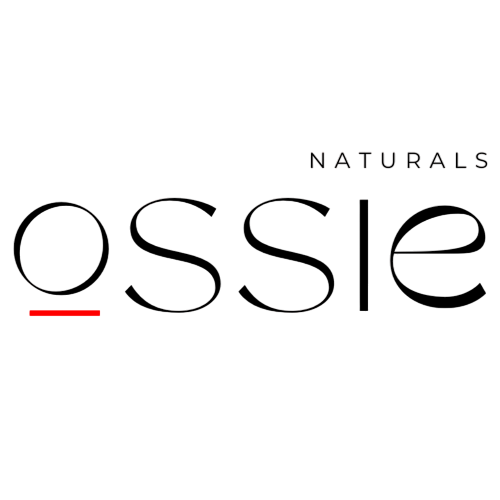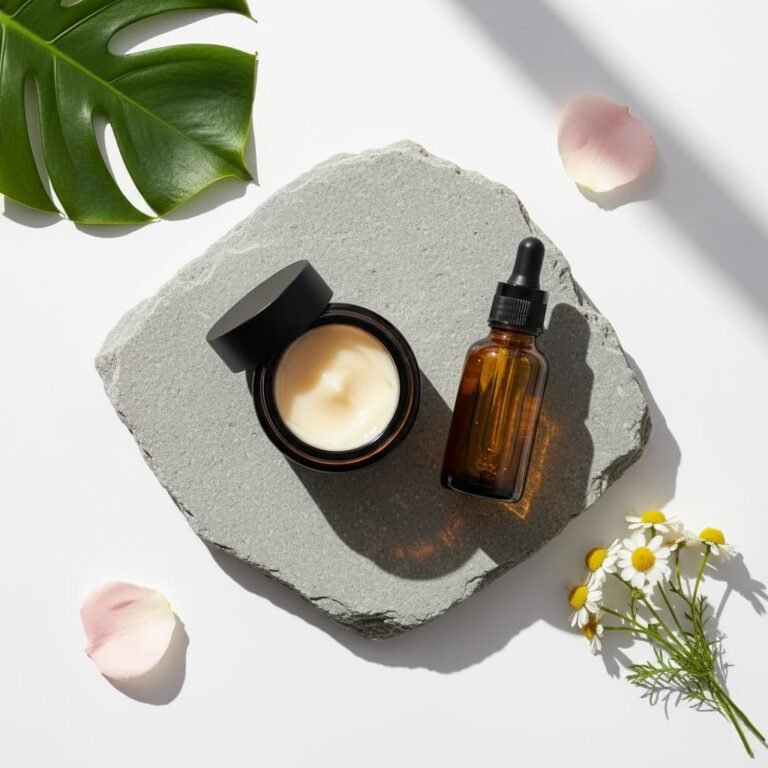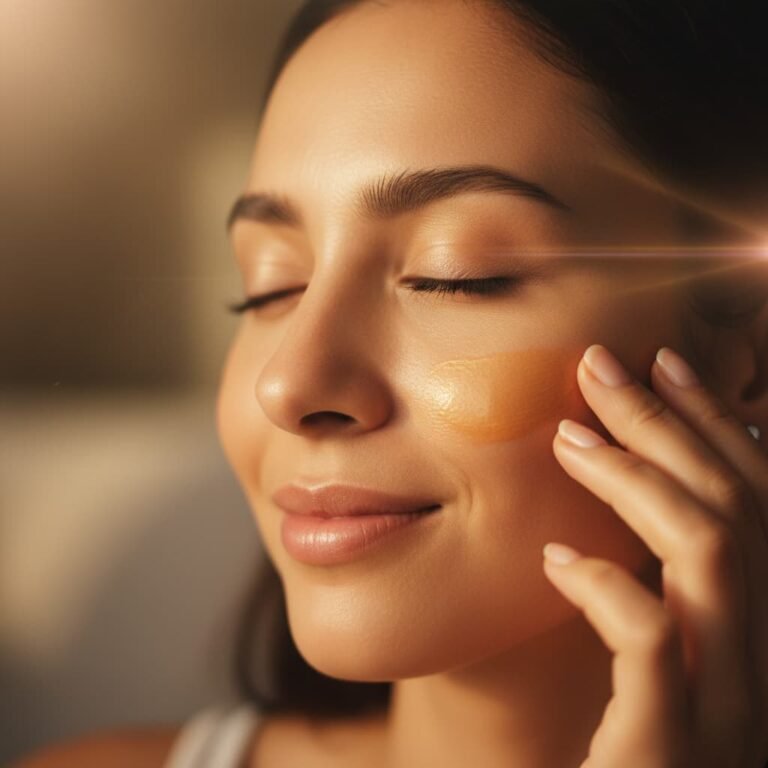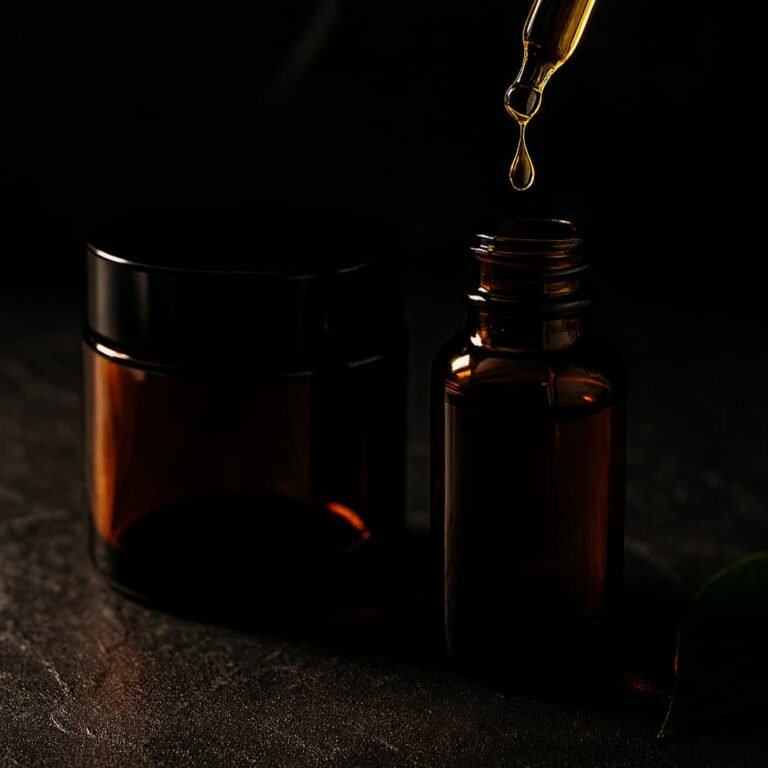Ingredients Spotlight: The Science-Backed Actives Your Skin Actually Needs
Navigating the world of skincare can feel overwhelming when every product promises miraculous results. Let's decode the ingredients that deliver real benefits
Let's decode the powerhouse ingredients
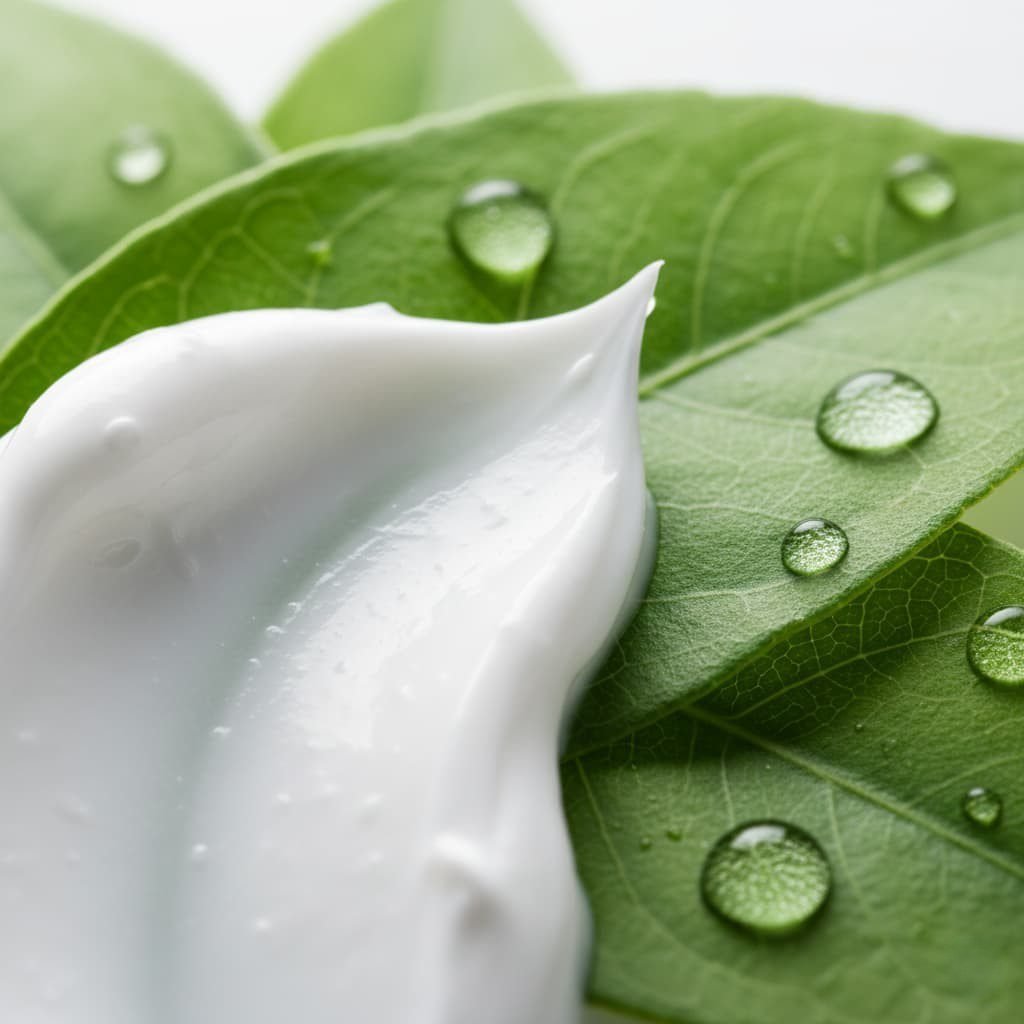
As conscious consumers, we’ve moved beyond marketing buzzwords to seek ingredients with proven efficacy. But navigating the world of skincare actives can feel overwhelming when every product promises miraculous results. Let’s decode the powerhouse ingredients that deliver real benefits for prevention-focused skincare. We invite you to take a moment for this next section, as it’s the foundation of everything we believe in. This is the knowledge that will empower your skincare choices for years to come.
Understanding these key actives empowers you to make informed choices that align with both your values and your skin goals. The beauty lies not in complex routines, but in selecting quality formulations that work synergistically to enhance your skin’s natural functions whilst addressing your specific concerns.
Antioxidant Powerhouses: Your Daily Defence System
Vitamin C: The Gold Standard Brightener
Vitamin C remains the cornerstone of prevention-focused skincare, offering triple benefits that make it essential for maintaining healthy, radiant skin. This powerhouse antioxidant neutralises free radicals from environmental stressors, stimulates collagen production to maintain firmness, and gently brightens skin tone for that coveted natural glow.
The key lies in choosing stable forms that deliver results without irritation. While L-Ascorbic Acid is the most potent and well-researched form, it can be unstable and cause sensitivity. To address this, advanced derivatives offer excellent alternatives:
- Water-soluble derivatives are popular for their stability and gentleness. Magnesium Ascorbyl Phosphate (MAP) is exceptionally gentle, making it ideal for sensitive skin, while Sodium Ascorbyl Phosphate (SAP) provides a great middle-ground of effectiveness with good tolerance across most skin types.
- Oil-soluble derivatives like Ascorbyl Tetraisopalmitate are highly valued for their superior stability. This structure allows for deep and effective penetration into the skin’s lipid barrier. It demonstrates high efficacy, boosting collagen, brightening skin, and providing potent antioxidant protection, often at lower concentrations than other forms. This makes it ideal for achieving deep anti-ageing, firming, brightening, and comprehensive skin rejuvenation.
Contrary to a popular myth, Vitamin C does not increase photosensitivity; in fact, it is photoprotective. Morning application is ideal to maximise this benefit, but it must always be paired with a mineral sunscreen for protection. This combination creates a powerful synergistic defence: the sunscreen acts as a shield, while Vitamin C neutralises the free radicals that get through.
Look for concentrations between 10-20% for L-Ascorbic Acid. Effective concentrations for derivatives vary by type, but a range of 5-15% is a common guideline for many stable forms.
Ferulic Acid: The Antioxidant Amplifier
Ferulic Acid might not be the star ingredient, but it’s the ultimate supporting player that elevates every formulation it touches. This plant-derived antioxidant significantly enhances the stability and efficacy of Vitamin C and Vitamin E, creating synergistic effects that exceed individual ingredient benefits.
Research demonstrates that Ferulic Acid doubles the photoprotection provided by Vitamins C and E whilst extending their active life in formulations. This means your expensive serums maintain potency longer and deliver superior environmental protection. The combination also provides enhanced anti-inflammatory benefits that support overall skin health.
Ferulic Acid works best in concentrations of 0.5-1%. You can find ferulic acid at a concentration range of 0.2-0.5%, depending on the purity, manufacturer, and formulation. Typically appearing in premium antioxidant serums rather than standalone products. Its presence indicates thoughtful formulation focused on ingredient synergy rather than marketing appeal. When you see Ferulic Acid listed alongside Vitamins C and E, you’re looking at scientifically-backed formulation expertise.
Vitamin E: The Protective Partner
Vitamin E (Tocopherol) serves as the perfect complement to Vitamin C, providing fat-soluble antioxidant protection that creates comprehensive defence against environmental damage. This essential vitamin supports skin barrier function, reduces inflammation, and helps maintain moisture balance for healthy, resilient skin.
The synergy between Vitamins C and E creates enhanced photoprotection that exceeds either ingredient alone. Vitamin E also helps stabilise Vitamin C in formulations, extending product efficacy and shelf life. Additionally, Vitamin E supports wound healing and may help reduce the appearance of scars and age spots over time.
Mixed tocopherols provide broader antioxidant activity compared to alpha-tocopherol alone, offering superior protection against various types of free radical damage. Look for concentrations between 0.1-1% in serums, balms and moisturisers. Vitamin E works well in both morning and evening routines, providing ongoing protective and reparative benefits.
Green Tea Extract: The Gentle Inflammation Fighter
Green Tea Extract (EGCG – Epigallocatechin Gallate) offers potent antioxidant and anti-inflammatory benefits that make it particularly valuable for maintaining calm, healthy skin whilst providing environmental protection. This botanical powerhouse delivers multiple skin benefits without irritation, making it suitable for all skin types, including sensitive.
Research demonstrates that Green Tea Extract helps protect against UV damage, reduces inflammation, and may help prevent premature ageing through its powerful polyphenol content. It also provides gentle antimicrobial benefits that can help maintain clear skin without disrupting the skin’s natural microbiome balance.
Effective concentrations range from 1-5% in serums and moisturisers. Green Tea Extract works well in both morning and evening routines, providing ongoing antioxidant protection and soothing benefits. Look for standardised extracts that specify EGCG content for consistent potency and results.
Pomegranate Extract: The Youth-Preserving Antioxidant
Pomegranate Extract contains powerful antioxidants, including punicalagins and ellagic acid, that provide exceptional anti-ageing benefits through multiple pathways. This fruit extract stimulates collagen production, protects against environmental damage, and helps maintain skin elasticity for a youthful appearance.
Studies show Pomegranate Extract can help regenerate skin cells, improve texture, and provide natural sun protection factors that complement your daily SPF. Its anti-inflammatory properties also help calm irritation whilst supporting healthy cellular turnover for radiant, smooth skin.
Concentrations of 1-3% provide effective antioxidant benefits in serums and moisturisers. Pomegranate Extract combines well with other antioxidants for enhanced protective effects and can be used morning or evening. Its natural astringent properties also make it valuable for maintaining a refined pore appearance.
Essential Vitamins: Comprehensive Skin Nutrition
Vitamin D: The Barrier Strengthener
Vitamin D plays a crucial role in skin barrier function and cellular repair processes, though it’s often overlooked in skincare discussions. This essential vitamin supports healthy cell differentiation, immune function, and wound healing whilst helping maintain optimal barrier integrity.
Topical Vitamin D analogues help regulate cellular turnover and support the skin’s natural repair mechanisms. This is particularly valuable for maintaining healthy, resilient skin that can better withstand environmental stressors and recover from minor damage more efficiently.
While direct topical Vitamin D is less common in cosmetic formulations, supporting your body’s Vitamin D levels through appropriate sun exposure and supplementation benefits overall skin health. Some advanced formulations include Vitamin D precursors that support natural synthesis within skin cells.
Vitamin K: The Circulation Enhancer
Vitamin K offers specific benefits for improving circulation and reducing the appearance of dark circles, telangiectasias (small capillaries), and minor bruising. This fat-soluble vitamin supports proper blood clotting and vascular health, making it valuable for maintaining even skin tone and healthy circulation.
While synthetic Vitamin K is used in clinical settings, its benefits are readily available in potent natural oils. A standout source is Prickly Pear Seed Oil, which is exceptionally rich in Vitamin K. This makes it highly effective for brightening under-eye dark circles and improving skin elasticity. Other natural sources include soybean, avocado, and olive oils, which are also valued for their Vitamin K content.
Topical application of these Vitamin K-rich oils helps strengthen capillary walls and improve microcirculation, leading to brighter, more even-toned skin. This is particularly effective around the delicate eye area, where circulation issues often manifest as dark circles.
For comprehensive vascular support and overall skin health, Vitamin K works exceptionally well in combination with Vitamin C and other antioxidants that help protect and repair the skin structure.
Cellular Renewal Champions: Gentle Resurfacing for Radiant Skin
Salicylic Acid: The Pore Perfecter
Salicylic Acid offers unique benefits as a beta-hydroxy acid (BHA) that can penetrate oil-filled pores to provide deep cleansing action. Unlike alpha-hydroxy acids that work on the surface, Salicylic Acid dissolves the bonds holding dead skin cells together from within pores, making it exceptional for maintaining clear, refined skin texture.
This acid provides gentle exfoliation without the irritation often associated with physical scrubs or harsh chemical peels. It also offers anti-inflammatory properties that help calm minor breakouts whilst preventing future congestion. For prevention-focused skincare, Salicylic Acid maintains optimal cellular turnover and pore clarity.
Effective concentrations range from 0.5-2%, with 1% providing an optimal balance between efficacy and tolerance for most skin types. Start with lower concentrations 2-3 times weekly, gradually increasing frequency as your skin adapts. Evening application works best, always followed by moisturiser and morning mineral sunscreen for protection.
Glycolic Acid: The Renewal Accelerator
Glycolic Acid, the smallest alpha-hydroxy acid (AHA), provides effective surface exfoliation that reveals brighter, smoother skin whilst stimulating collagen production for long-term anti-ageing benefits. This powerhouse ingredient addresses multiple concerns simultaneously, making it valuable for comprehensive skin maintenance.
Regular Glycolic Acid use improves skin texture, reduces the appearance of fine lines, and enhances product absorption for better overall routine efficacy. It also helps fade minor discolouration and maintains healthy cellular turnover that keeps skin looking fresh and radiant. The key is consistent, moderate use rather than aggressive application.
Home-use products typically contain 5-10% Glycolic Acid, providing effective results without professional supervision. Begin with a once or twice weekly application, monitoring skin response and adjusting frequency accordingly. Always use evening application followed by thorough morning SPF protection, as AHAs increase photosensitivity.
Azelaic Acid: The Multi-Tasking Marvel
Azelaic Acid deserves recognition as one of skincare’s most versatile ingredients, offering anti-inflammatory, antimicrobial, and gentle exfoliating properties in a single, well-tolerated active. This naturally occurring acid provides multiple benefits without the sensitivity often associated with other exfoliating ingredients.
Particularly effective for maintaining even skin tone, Azelaic Acid gently inhibits tyrosinase enzyme activity to prevent excess pigmentation whilst providing mild exfoliation that reveals brighter skin. Its anti-inflammatory properties make it suitable for sensitive skin types that cannot tolerate stronger acids or retinoids.
Concentrations of 10-20% provide optimal efficacy for most concerns, with 10% being ideal for maintenance and prevention. Azelaic Acid can be used morning or evening, and unlike many acids, it doesn’t significantly increase photosensitivity. This makes it perfect for consistent daily use in prevention-focused routines.
Advanced Renewal: Retinoids and Natural Alternatives
Retinol: The Proven Anti-Ageing Gold Standard
Retinol remains the most scientifically validated anti-ageing ingredient available, with decades of research supporting its ability to stimulate collagen production, accelerate cellular turnover, and improve skin texture and tone. For prevention-focused skincare, Retinol offers unmatched long-term benefits when used consistently and correctly.
The key to successful Retinol use lies in gradual introduction and consistent application rather than high concentrations that cause irritation. Start with 0.25-0.5% concentrations 1-2 times weekly, slowly increasing frequency as tolerance develops. Quality formulations often include soothing ingredients that minimise irritation whilst maintaining efficacy.
Evening application is essential, as Retinol increases photosensitivity and can degrade in sunlight. Always follow with a moisturiser and use diligent mineral sunscreen for protection during the day. Patience is crucial—visible improvements typically appear after 6-12 weeks of consistent use, with continued benefits developing over months and years.
Bakuchiol: The Gentle Natural Alternative
Bakuchiol has emerged as a compelling natural alternative to Retinol, offering similar benefits through different mechanisms without the sensitivity and restrictions associated with traditional retinoids. This plant-derived ingredient provides anti-ageing benefits whilst maintaining excellent tolerance across all skin types.
Research demonstrates that Bakuchiol stimulates collagen production and improves skin elasticity similarly to Retinol, but through antioxidant pathways rather than cellular irritation. This means you can achieve anti-ageing benefits without the adjustment period, peeling, or photosensitivity that often accompany Retinol use.
Bakuchiol can be used morning and evening without photosensitivity concerns, making it ideal for consistent daily application. Concentrations of 0.5-2% provide effective results, often combined with other botanical actives for enhanced benefits. It’s particularly valuable for those who cannot tolerate traditional retinoids or prefer purely plant-based alternatives.
Marine Bio-Retinoids: The Next-Generation Alternative
Beyond Bakuchiol, a new class of innovators is emerging from marine biotechnology. A leading example is an Enhanced Retinoid Complex derived from Chlorella vulgaris microalgae. This bio-retinoid contains marine apocarotenoids that mimic the action of traditional retinoids, binding to skin receptors to stimulate renewal and deliver powerful anti-ageing and anti-acne results.
What makes this complex a next-generation ingredient is its performance profile. Supplier-led in-vitro studies have shown it can outperform both 0.3% Retinol and 1% Bakuchiol in key anti-ageing metrics. Crucially, it achieves these results while being completely non-irritating and non-photosensitising, offering the efficacy of a retinoid without the associated drawbacks. This makes it an exceptional choice for achieving significant skin rejuvenation with remarkable gentleness.
Structural Support: Building Blocks for Youthful Skin
Collagen: The Foundation of Firm Skin
Collagen is the most abundant protein in our skin, forming the essential structural framework that provides firmness, elasticity, and a youthful appearance. As we age, our natural collagen production declines, and existing collagen is broken down by environmental factors like UV radiation. Addressing this loss is key to any effective anti-ageing strategy. However, how we approach collagen matters significantly.
- Native Collagen: Too Large for Topical Use
When you see “collagen” listed as an ingredient, it’s important to understand its function. A whole, native collagen molecule has a very large molecular size (approximately 300,000 Daltons). According to the “500 Dalton Rule” of cosmetic science, only molecules smaller than 500 Daltons can effectively penetrate the skin’s outer barrier. Therefore, native collagen molecules in creams and serums cannot penetrate the skin to replenish lost collagen. Instead, they remain on the surface, where they can act as a humectant, binding water to the skin and providing a temporary moisturising and smoothing effect.
- Hydrolysed Collagen & Peptides: The Topical Moisturisers & Messengers
To overcome the size limitation, collagen is often processed through hydrolysis, breaking it down into smaller fragments:
- Hydrolysed Collagen: These are larger fragments of the original collagen protein. While smaller, they are still generally too large to penetrate deeply. Their primary benefit in a topical formula is to provide excellent surface hydration and support the skin’s moisture barrier.
- Collagen Peptides: These are even smaller chains of amino acids. Some peptides are small enough to penetrate the skin’s surface. Once absorbed, they can act as signalling molecules, essentially sending messages to your skin cells (fibroblasts) to stimulate their own natural production of new collagen.
- Collagen-Boosting Ingredients: The True Stimulators
The most scientifically validated approach to increasing skin’s collagen is not by applying collagen itself, but by using active ingredients that stimulate your body’s own synthesis processes. The gold-standard ingredients for this are:
- Vitamin C: This potent antioxidant is an essential cofactor for the enzymes that build and stabilise the collagen molecule. Without adequate Vitamin C, the entire process is impaired.
- Retinoids (and Retinol): These Vitamin A derivatives work by binding to receptors in skin cells, which in turn regulates gene expression to increase collagen production and slow its breakdown.
- Peptides: As mentioned, these small chains of amino acids act as messengers that trigger the skin’s natural repair and renewal mechanisms, including the creation of new collagen.
- Marine Collagen & Plant-Based Alternatives: Providing the Building Blocks
- Marine Collagen: Derived from fish, this is a rich source of Type I collagen, the same type that is most abundant in human skin. When hydrolysed for topical use, it functions as a superior moisturiser and provides the skin with a source of amino acids.
- “Plant-Based Collagen”: This term is a misnomer, as collagen is an animal-derived protein. Products marketed this way contain intelligent complexes of plant-derived peptides and amino acids that mimic the profile of collagen. They do not add collagen to the skin, but they provide the essential building blocks your skin needs to support its own synthesis processes.
Peptides: The Cellular Communication Enhancers
Peptides are short chains of amino acids that act as sophisticated cellular messengers, signalling your skin to perform specific functions. They are a cornerstone of modern, prevention-focused skincare because they offer targeted, high-performance benefits without the irritation associated with some other active ingredients.
- Different Peptides, Different Signals
The power of peptides lies in their specificity. Different types of peptides send different instructions to your skin cells:
- Signal Peptides: These are the most well-known in anti-ageing. They signal fibroblasts to produce more collagen, elastin, and other proteins, leading to firmer, plumper skin and a reduction in wrinkles.
- Carrier Peptides: These peptides work by delivering essential trace elements, like copper and manganese, to the skin. These minerals are vital for enzymatic processes involved in collagen synthesis, wound healing, and antioxidant functions.
- Neurotransmitter-Inhibiting Peptides: Often marketed as “Botox-like,” these peptides work by intercepting the signals between nerves and muscles. This helps to relax facial muscles, softening the appearance of dynamic expression lines like crow’s feet and forehead wrinkles.
- How to Use Peptides Effectively
Peptides are versatile and generally well-tolerated by all skin types.
- Concentration: Effective concentrations vary by the specific peptide, but a range of 2-10% is a common guideline for seeing results in serums and moisturisers.
- Application: They are not photosensitising and can be used in both morning and evening routines.
- Compatibility: Peptides combine excellently with other ingredients like hyaluronic acid, antioxidants, and niacinamide, often enhancing their overall benefits. When choosing a product, look for formulations that specify the types of peptides used, as this transparency is often an indicator of an effective, well-researched formula.
Hydration Heroes: Deep Moisture and Barrier Support
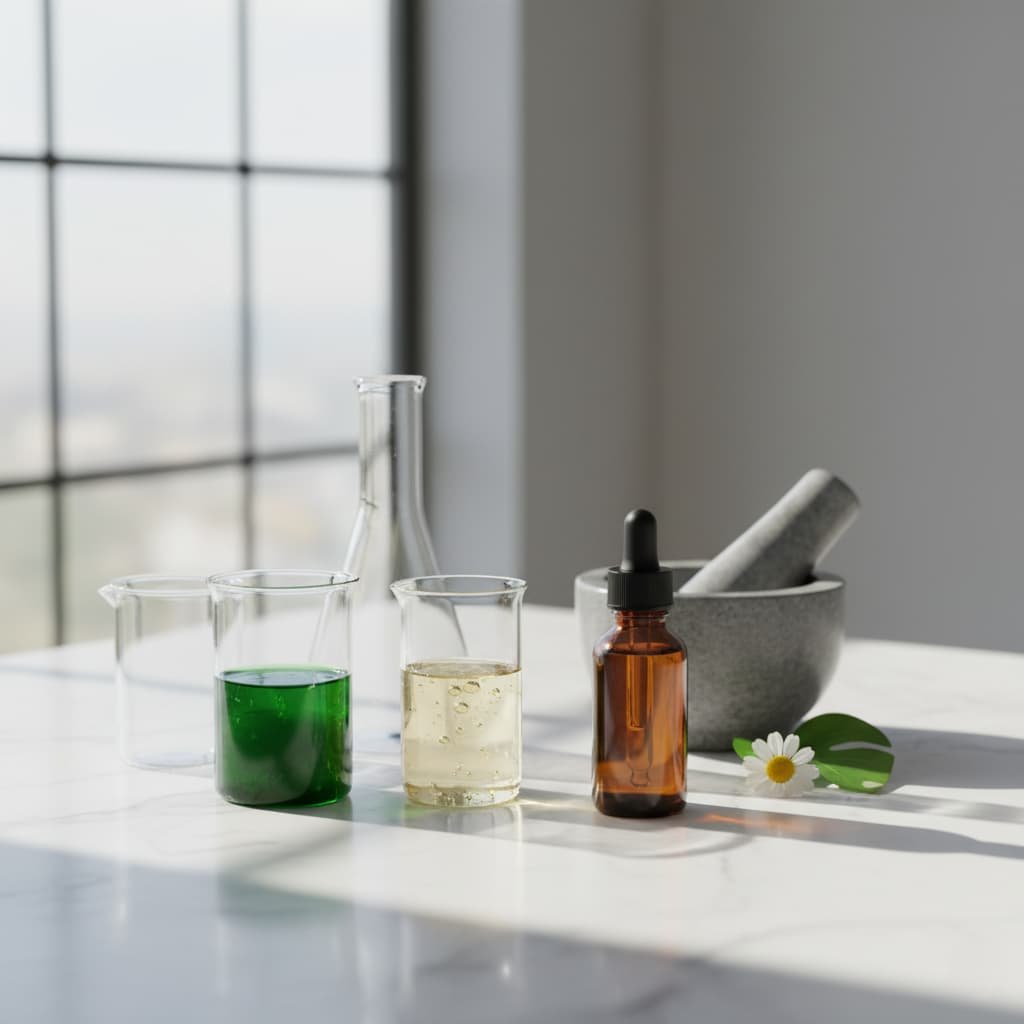
Hyaluronic Acid: The Moisture Magnet
Hyaluronic Acid stands as skincare’s most effective humectant, capable of holding up to 1,000 times its weight in water. This naturally occurring substance provides immediate plumping effects whilst supporting long-term skin hydration and barrier function for healthy, resilient skin.
Different molecular weights of Hyaluronic Acid provide varying benefits: low molecular weight penetrates deeper for structural hydration, while high molecular weight forms a protective film that prevents moisture loss. The best formulations combine multiple weights for comprehensive hydration benefits.
Concentrations of 0.1-2% provide effective hydration without sticky residue. Hyaluronic Acid works well in serums applied to damp skin, followed by moisturiser to seal in hydration. It combines excellently with all other ingredients and can be used morning and evening for optimal moisture maintenance.
Urea: The Gentle Exfoliating Moisturiser
Urea offers dual benefits as both a humectant and a gentle exfoliant, making it particularly valuable for maintaining smooth, hydrated skin texture. This naturally occurring compound provides immediate moisture whilst gently dissolving the bonds between dead skin cells for natural exfoliation.
At lower concentrations (5-10%), Urea primarily functions as a moisturising agent, whilst higher concentrations (10-40%) provide increasing exfoliating benefits. This versatility makes Urea valuable for customising your skincare approach based on current skin needs and tolerance levels.
Urea works particularly well in body care products and can be used daily without irritation for most skin types. It combines well with other moisturising ingredients and can help enhance the penetration of other actives whilst maintaining skin comfort and hydration.
Glycerine: The Fundamental Hydrator
Glycerine represents one of skincare’s most fundamental and effective ingredients, providing reliable hydration whilst supporting barrier function and skin comfort. This simple yet powerful humectant draws moisture from the environment whilst helping skin retain its natural water content.
Research demonstrates that Glycerine not only provides immediate hydration but also supports the skin’s natural moisturising factor production over time. This creates cumulative benefits that improve the skin’s natural ability to maintain optimal hydration levels independently.
Effective in concentrations from 3-15%, Glycerine appears in virtually all quality moisturisers and serums. Plant-derived Glycerine offers the same benefits as synthetic versions whilst aligning with natural product preferences. It combines well with all other ingredients and provides the foundation for effective skincare formulations.
Skin Barrier Support: Foundation for Healthy Skin
Ceramides: The Barrier Building Blocks
Ceramides are essential lipids (fats) that are a fundamental component of your skin’s protective barrier. To understand their importance, think of your skin barrier as a brick wall: your skin cells (corneocytes) are the bricks, and a complex lipid matrix acts as the mortar holding them together. Ceramides make up approximately 50% of this crucial mortar, making them non-negotiable for healthy, resilient skin function. As we age, or due to environmental stressors and the use of harsh cleansers, our natural ceramide production declines. This creates “cracks” in the mortar, leading to increased water loss, dryness, irritation, and a heightened sensitivity to external factors.
Topical application of ceramides works by directly replenishing this lipid mortar, effectively patching the cracks to restore optimal barrier function. This immediately improves moisture retention and reduces sensitivity. However, for the most effective repair, ceramides need their partners. The skin’s natural mortar isn’t just ceramides; it’s a precise blend of ceramides, cholesterol, and free fatty acids. Formulations that include this complete trio are considered the gold standard for barrier repair, as they mimic the skin’s natural structure for superior results.
When looking for effective ceramide products, consider the following:
- Multiple Ceramide Types: A quality formulation will often contain a blend of different ceramides, as they perform distinct roles. For example, Ceramide 1 (EOP) is vital for structurally linking the lipid layers together, while Ceramide 3 (NP) is a powerhouse for moisture retention, and Ceramide 6-II (AP) helps maintain a smooth skin surface.
- Skin-Identical vs. Plant-Derived: Many advanced formulas use “skin-identical” ceramides synthesised to be an exact match for those in your skin. Natural alternatives, often called pseudo-ceramides, can be found in ingredients derived from oats, wheat, and rice, which also help support the skin’s barrier function.
Because they are so fundamental to skin health, ceramides are beneficial for all skin types. They are particularly valuable for creating a resilient canvas when using potent active ingredients like retinoids or exfoliating acids, which can temporarily compromise barrier function.
Niacinamide: The Universal Skin Soother
Niacinamide (Vitamin B3) is a remarkably versatile, water-soluble vitamin that acts as a powerful cellular communicator, providing multiple benefits with an exceptionally low risk of irritation. This makes it a universally beneficial ingredient suitable for nearly all skin types and concerns. Its primary roles include regulating oil production, reducing inflammation, improving barrier function, and offering gentle brightening effects.
The true power of Niacinamide lies in how it achieves these results:
- Barrier Reinforcement: It works by significantly boosting the skin’s natural production of ceramides, free fatty acids, and cholesterol. This directly strengthens the skin’s lipid “mortar,” reducing water loss and enhancing resilience against environmental stressors.
- Anti-Inflammatory Action: It has potent anti-inflammatory properties that help calm redness and sensitivity, making it highly effective for managing conditions like acne and rosacea.
- Pore and Oil Regulation: It helps to balance sebum (oil) production from the sebaceous glands. By regulating oil and improving skin elasticity, it helps prevent pores from becoming stretched or clogged, leading to a more refined skin texture.
- Gentle Brightening: Unlike direct pigment inhibitors, Niacinamide works by interrupting the transfer of pigment (melanin) from its production cells (melanocytes) to the surface skin cells (keratinocytes). This results in a more even and luminous skin tone over time.
Because of its calming nature, Niacinamide is an excellent complementary ingredient to use alongside more potent actives like retinoids and exfoliating acids, helping to maintain skin comfort and barrier health while maximising treatment benefits.
Effective concentrations typically range from 2-10%. A concentration of 5% is widely considered the sweet spot for delivering optimal, well-rounded benefits for most skin types. Niacinamide is not photosensitive and can be used in both morning and evening routines, integrating seamlessly into virtually any skincare regimen.
Targeted Brightening: Advanced Pigmentation Management
Kojic Acid: The Natural Brightener
Kojic Acid, derived from rice fermentation, offers gentle yet effective brightening benefits through tyrosinase enzyme inhibition. This natural ingredient provides gradual, sustainable improvement in skin tone and radiance without the harsh effects associated with some synthetic lightening agents.
Unlike aggressive brightening ingredients that can cause irritation or rebound pigmentation, Kojic Acid works gradually to prevent excess melanin production whilst supporting healthy cellular turnover. This creates natural-looking brightness that enhances your skin’s inherent radiance rather than creating artificial lighting effects.
Concentrations of 1-4% provide effective results with minimal irritation risk. Kojic Acid can be used morning or evening, though evening application may be preferable to avoid any potential photosensitivity. Consistent use over 6-12 weeks typically shows gradual but sustainable improvement in overall skin brightness and tone.
Specialised Actives: Advanced Solutions for Specific Concerns
Alpha Lipoic Acid: The Universal Antioxidant
Alpha Lipoic Acid offers unique benefits as both water and fat-soluble antioxidants, providing comprehensive protection against various types of free radical damage. This powerful ingredient also helps regenerate other antioxidants like Vitamins C and E, extending their protective benefits and creating synergistic anti-ageing effects.
Research demonstrates that Alpha Lipoic Acid can help improve skin texture, reduce the appearance of pores, and provide anti-inflammatory benefits that support overall skin health. Its ability to function in both aqueous and lipid environments makes it particularly effective for comprehensive cellular protection.
Concentrations of 0.5-5% provide effective antioxidant benefits without irritation. Alpha Lipoic Acid works well in serums and balms, and can be used morning or evening. It combines well with other antioxidants for enhanced protective effects and supports overall anti-ageing skincare strategies.
Coenzyme Q10: The Cellular Energy Booster
Coenzyme Q10 (Ubiquinone) plays essential roles in cellular energy production whilst providing antioxidant protection that helps maintain youthful skin function. This naturally occurring compound supports cellular repair processes and helps protect against environmental damage that contributes to premature ageing.
As we age, natural CoQ10 levels decline, making topical application valuable for supporting optimal cellular function. Research shows that CoQ10 can help improve skin elasticity, reduce the appearance of fine lines, and support overall skin health through enhanced cellular energy production.
Effective concentrations range from 0.1-1% in serums and moisturisers. CoQ10 works well in evening routines and combines excellently with other antioxidants for comprehensive anti-ageing benefits. Its gentle nature makes it suitable for all skin types, including sensitive.
Allantoin: The Gentle Soother
Allantoin offers exceptional soothing and healing benefits, making it valuable for maintaining calm, comfortable skin whilst supporting natural repair processes. This naturally occurring compound promotes cellular regeneration whilst providing anti-inflammatory benefits that help maintain skin comfort.
Particularly valuable for sensitive or compromised skin, Allantoin helps accelerate wound healing, reduce irritation, and support barrier repair. Its gentle nature makes it an excellent complement to more active ingredients, helping maintain skin comfort whilst maximising treatment benefits.
Concentrations of 0.1-2% provide effective soothing benefits without residue. Allantoin works well in all product types and can be used morning and evening. It’s particularly valuable in formulations designed for sensitive skin or as support for more aggressive treatments.
Practical Application: Building Your Ingredient Strategy
Layering Logic: Maximising Ingredient Synergy
Successful active ingredient use requires understanding proper application order and combinations that enhance rather than compromise efficacy. The general rule follows molecular weight – thinnest to thickest consistency – but ingredient interactions require more nuanced consideration for optimal results.
Morning routines should prioritise antioxidant protection with Vitamin C, Ferulic Acid, Green Tea Extract, and Niacinamide, followed by Hyaluronic Acid, moisturiser, and mineral sunscreen for protection. Evening routines can incorporate exfoliating acids or retinoids, followed by barrier-supporting ingredients like ceramides, peptides, and hydrating serums.
Avoid combining certain actives that can cause irritation or reduce efficacy – such as Vitamin C with Retinol, or multiple acids in the same application. Instead, alternate these ingredients on different days or use them at different times of day. Quality over quantity remains the guiding principle for sustainable, effective skincare.
Concentration Considerations: Finding Your Sweet Spot
Starting with lower concentrations and gradually increasing allows your skin to adapt whilst minimising irritation risk. This approach provides better long-term results than aggressive initial use, which can compromise barrier function and create sensitivity patterns that require extensive recovery time.
Monitor your skin’s response carefully, adjusting frequency and concentration based on tolerance rather than following rigid schedules. Healthy skin should feel comfortable and look radiant – persistent irritation, excessive dryness, or increased sensitivity indicates the need for routine modification rather than pushing through discomfort.
Remember that consistency trumps intensity for long-term skin health. Regular use of moderate concentrations provides superior results compared to sporadic use of high-potency products that create irritation cycles requiring recovery periods between applications.
Seasonal Adjustments: Adapting Your Ingredient Strategy
Your skin’s needs change with seasons, environmental conditions, and life circumstances, requiring flexible approaches to ingredient selection and application. Winter might call for increased hydrating ingredients like Hyaluronic Acid and Urea, whilst summer might emphasise antioxidant protection through Vitamin C and Green Tea Extract.
Hormonal fluctuations, stress levels, and lifestyle changes also influence optimal ingredient choices. Maintaining a core routine of well-tolerated ingredients whilst adjusting supporting actives based on current needs provides the best balance of consistency and responsiveness to changing skin requirements.
Document what works best during different seasons and circumstances, creating personalised guidelines that help you make informed adjustments without starting from scratch each time your needs change.
Conclusion: Your Informed Ingredient Journey
Understanding these foundational powerhouse ingredients is the first and most critical step. It empowers you to cut through the noise of marketing claims and make informed choices that align with your skin’s long-term health. The beauty of modern, intelligent skincare lies not in chasing miracle promises, but in selecting quality formulations that work synergistically to support your skin’s natural functions.
However, this is just the beginning of the conversation.
Beyond these well-studied actives lies a rich and diverse world of botanical compounds that offer nuanced, personalised support. The true art of a masterful skincare ritual is learning to adapt it to your unique and ever-changing needs. Factors like age, hormonal fluctuations, seasonal changes, and even daily stress levels all influence your skin’s behaviour.
This is where the vast library of nature becomes your ally. A rich, nourishing shea or mango butter might be essential during a harsh winter, while a light, balancing grapeseed or jojoba oil could be perfect for summer. Potent plant extracts, from anti-inflammatory Centella Asiatica to brightening Liquorice Root, can be introduced to address specific concerns as they arise.
Your skincare journey should feel dynamic, intuitive, and deeply personal. The key to lasting success lies not in finding a single “holy grail” product, but in building a foundational understanding of what your skin needs and why. This knowledge allows you to confidently select and adapt your routine, choosing quality over quantity and consistency over intensity.
By investing in this understanding, you are no longer just a consumer; you are the architect of your own skin’s health. You are building a routine that serves your skin’s current needs while investing in its future resilience and radiance. Your skin deserves nothing less than ingredients that work as intelligently as you do, delivering the real, sustainable results you expect from your investment.
Support Your Skin
Our natural product collection at Ossie Naturals is formulated specifically to support your skin’s natural adaptive processes. Each product provides the building blocks your skin needs, from barrier-supporting lipids to adaptive antioxidants.
We don’t believe in dramatic seasonal routine overhauls or aggressive treatments that fight against your skin’s natural processes. Instead, our approach focuses on gentle, consistent support that works with your skin’s intelligence rather than against it.
Join our private community on Facebook or join our Newsletter for access to seasonal transition guides, ingredient education, and products specifically formulated to support your skin through changes because your skin’s adaptive intelligence deserves support, not interference.
Performance‑led, nutrient‑rich compositions
Our House Collection
Calendula Balm - Original™
Restorative and Calming Concentrate
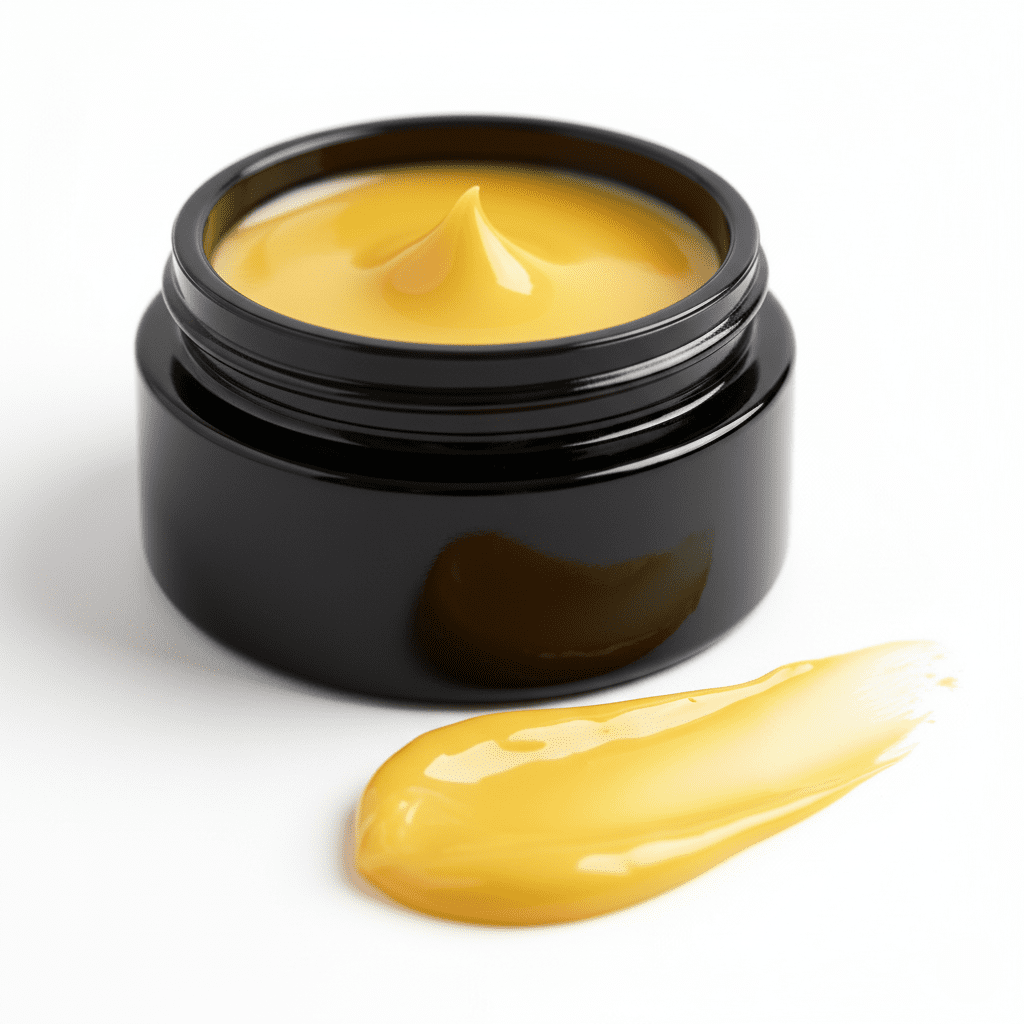
Azure Tansy
Balm™
Intensive Repair and Protection Complex
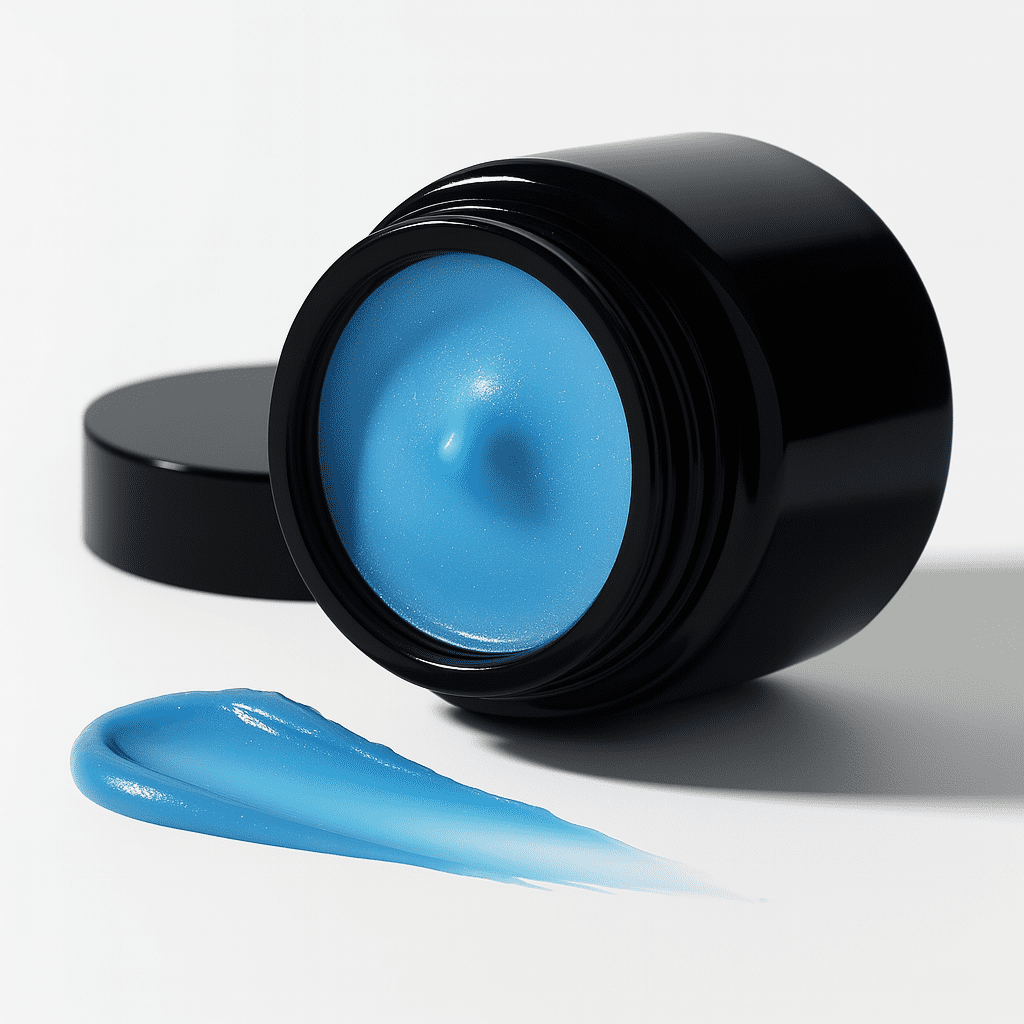
TerraPure - Original Deodorant
Powerful protection, naturally
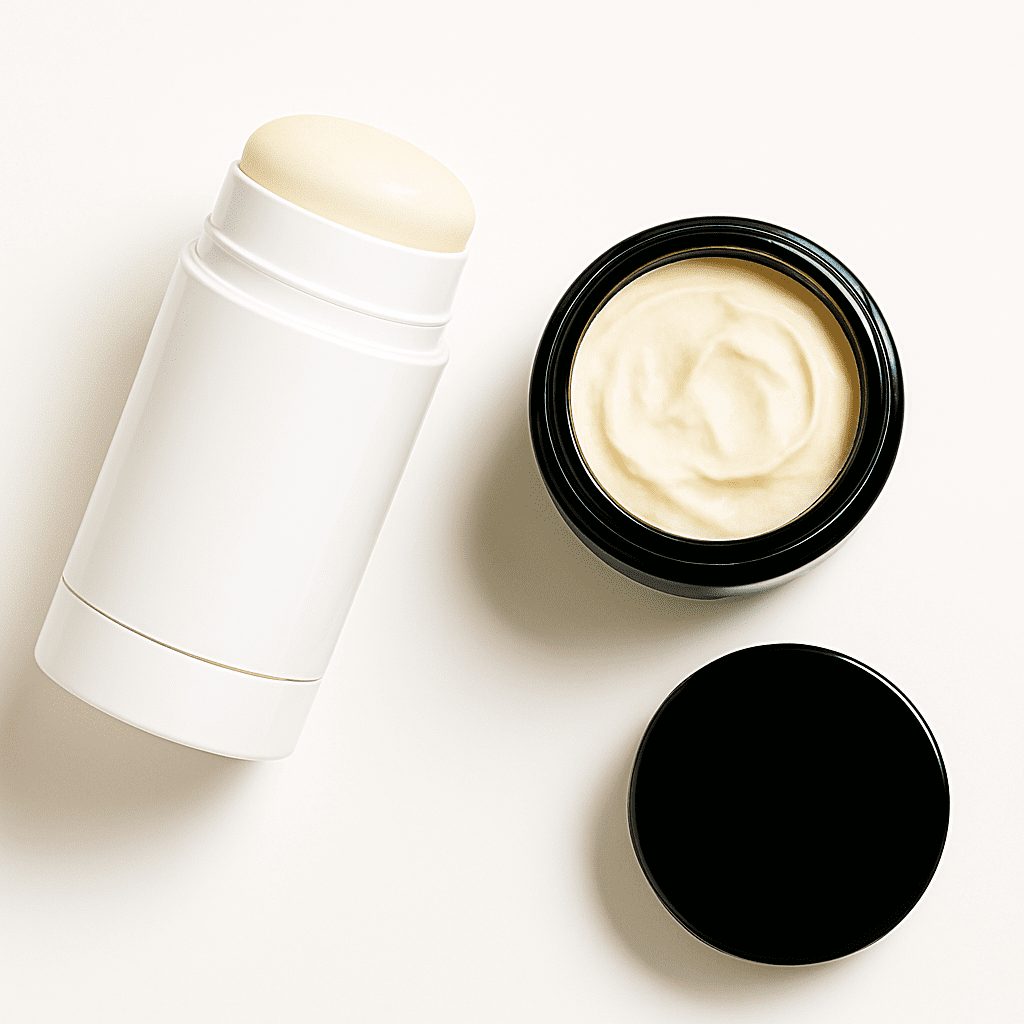
Restorative Phyto‑Serum Oil™
Renewal and Balance. Visible transformation in every drop
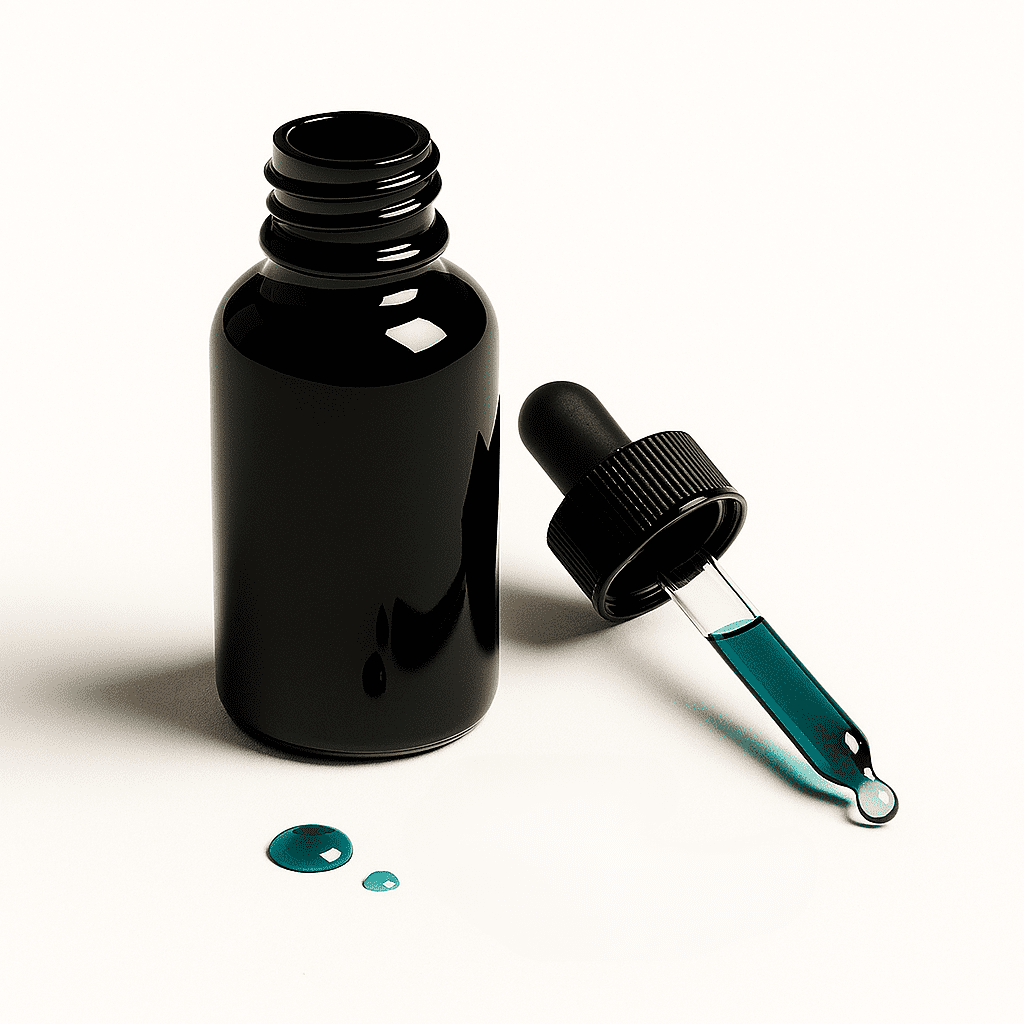
We empower your skin to thrive.
Sign Up Newsletter
Ready to invest in your skin’s future with the finest natural ingredients? Explore our collections or join our community for expert tips and exclusive access.
We value your trust when sharing your personal data with us. We always treat your data in a fair and respectful manner, limited to the purpose mentioned above. If you would like to know more about how we handle your data, please read our Privacy Policy.
